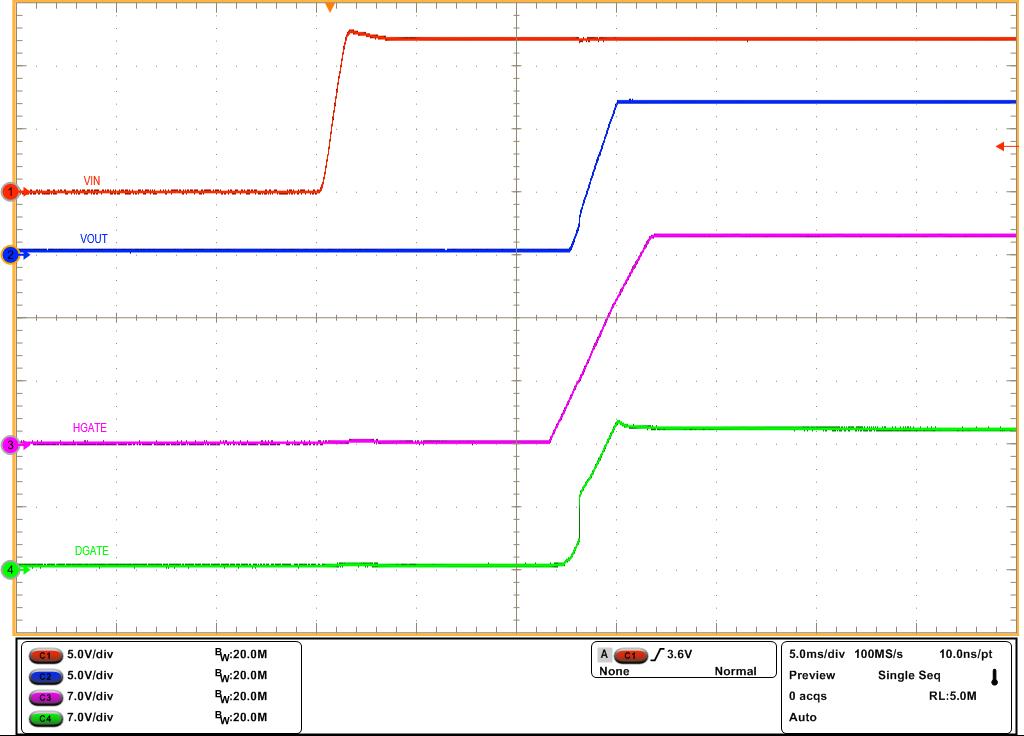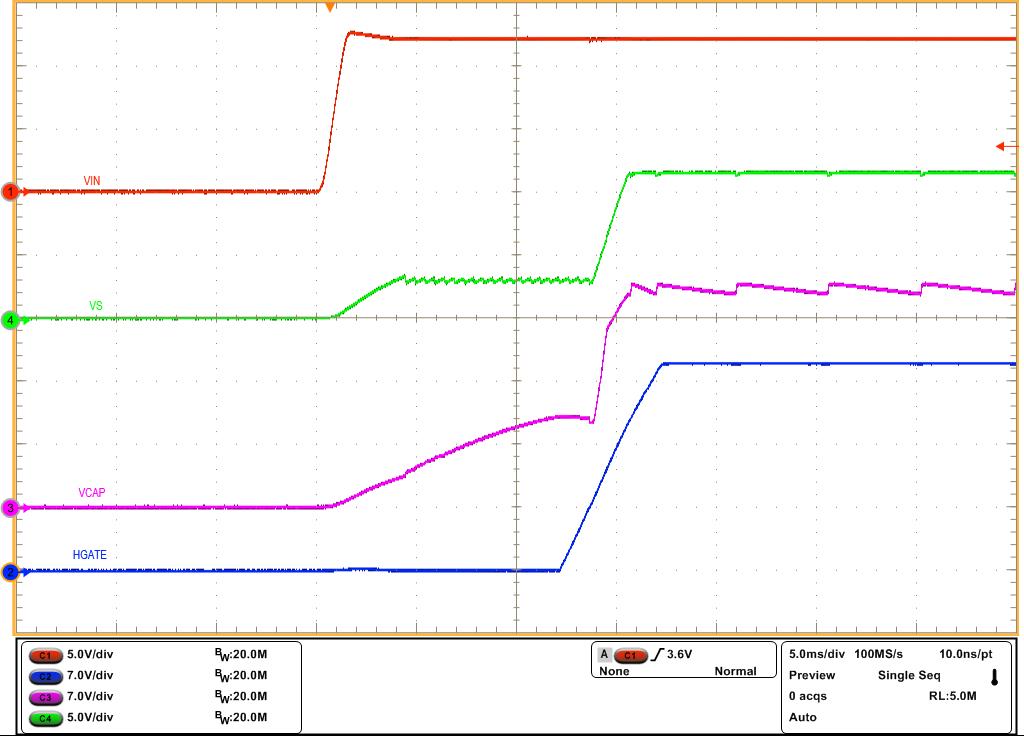SLUUCW6 November 2023
2.3.1 Power-up and Power-down with Input Voltage
Use the following instructions to capture the precharging current profile.
- Set the input supply voltage VIN to 12 V and current limit of 10 A.
- Verify that the J5 jumper setting is set to 1-2.
- Turn ON the input power supply.
- Observe the start-up profile of charge pump voltage VCAP, HGATE, DGATE and output voltage.
- Turn OFF the input power supply.
- Observe the shutdown profile of charge pump voltage (VCAP– VVS), output voltage, HGATE, and DGATE.
 Figure 2-2 LM74930-Q1
Start-Up
With
VIN - HGATE, DGATE and
VOUT
Figure 2-2 LM74930-Q1
Start-Up
With
VIN - HGATE, DGATE and
VOUT Figure 2-3 LM74930-Q1
Start-Up
With
VIN - VS, CAP and HGATE
Figure 2-3 LM74930-Q1
Start-Up
With
VIN - VS, CAP and HGATE